1. Macro - industry Dynamics
According to the latest data released by IDC, in 2023, 725,000 AR/VR headsets were shipped in the Chinese market (sales - in basis), a 39.8% year - on - year decline compared to 2022. Among them, 262,000 AR headsets were shipped, a 154.4% year - on - year increase, while 463,000 VR headsets were shipped, a 57.9% year - on - year decrease. It is worth noting that in the fourth quarter, 118,000 AR headsets and 110,000 VR headsets were shipped. Although some AR manufacturers had channel inventory issues, this was the first time that AR shipments in the Chinese market exceeded VR shipments in a single quarter.
2. Global Industry Dynamics
According to statistics from LEDinside, in 2023, 9 Micro LED AR glasses were released or launched on the market. Compared with only 3 products in 2022, the number of new products tripled.
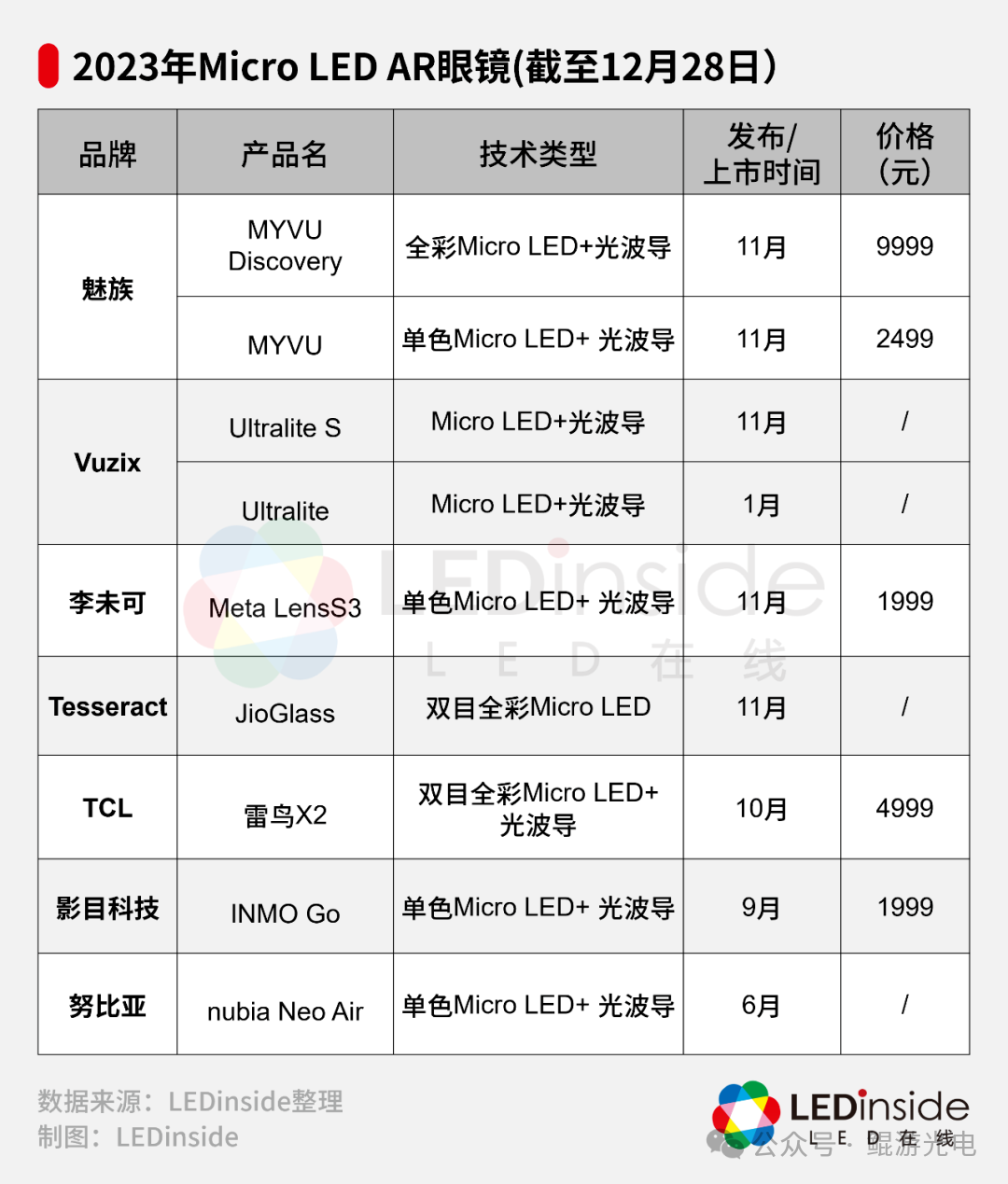
On March 12, Apple announced that it would open a new application research laboratory in Shenzhen to provide stronger support for employees across the region and deepen cooperation with local suppliers. This new laboratory will enhance the testing and research capabilities for products such as the iPhone, iPad, and Apple Vision Pro. It is reported that Apple has invested over 1 billion yuan in its advanced application research laboratories, and this investment will continue to grow with the addition of the new facility in Shenzhen.
Vizux, an AR product and technology developer, announced the immediate launch of a cost - reduction plan. It is expected that after the full implementation of this plan, Vizux's annual operating expenses will be reduced by $8 million, or 25%, which will bring many benefits to its 2024 operating performance. Vizux's fourth - quarter revenue is expected to be approximately $2.1 million, a 36% year - on - year increase. However, this improvement is offset by a 72% quarter - on - quarter decline in realized engineering services. Vizux's fourth - quarter revenue results are preliminary and unaudited, and may change as the company completes its quarterly and year - end closing processes and review procedures.
It is reported that Google, a subsidiary of Alphabet (GOOGL.US), is laying off hundreds of employees in its digital assistant, hardware, and engineering teams to continue cost - cutting. Affected employees include those in the voice - based Google Assistant and augmented reality (AR) hardware teams. The company stated that employees in its central engineering department have also been affected by the layoffs. This layoff indicates that Google is no longer developing its own AR hardware and is fully committed to the OEM cooperation model. Employees can apply for vacant positions within the company, and Google will continue to provide support as always.
It is reported that Meta Reality Labs' quarterly revenue in the fourth - quarter earnings call was $1.07 billion. This is the highest quarterly revenue for Meta Reality Labs to date, mainly attributed to the launch of the Meta Quest 3.
There are rumors that Meta will showcase the prototype of its first true AR glasses, Orion, at the 2024 Connect conference. However, the device will not be available for public sale and will only be used for demonstration purposes. In 2027, the company will launch its first AR glasses for public sale, Artemis. This augmented reality glasses are independent of Meta's Ray - Ban smart glasses and Quest headsets, and Reality Labs has been working on the Orion project for many years.
3. Domestic Industry Dynamics
According to Sina Technology, in response to media reports last week that "Luo Yonghao's Thin Red Line company has shifted its business from AR to large - scale models," a person from the company responded that the report was false and Luo Yonghao is still focused on AR software and hardware. Multiple sources said that the R & D of Luo Yonghao's Thin Red Line AR business in software and hardware has slowed down, there have been layoffs in AR - related businesses, and the company may shift to the large - scale model industry.
BOE Huacan Optoelectronics held a topping - out ceremony for its Micro LED wafer manufacturing and packaging test base project in Jinwan District, Zhuhai, marking a phased achievement in the construction of BOE Huacan's Micro LED R & D and production base. It is reported that the total investment of the BOE Huacan Micro LED wafer manufacturing and packaging test base project is 2 billion yuan. The project plans to light up its first product in the third quarter of this year and achieve mass production in December. In the future, it will mainly produce Micro LED chips, devices, and other products.
4. Strategic Cooperation Dynamics
4.1 Investment and Financing
Saudi Arabia's sovereign wealth fund has invested over $500 million in the VR glasses company Magic Leap to compete with Apple's Vision Pro. Its Public Investment Fund has injected $590 million (about 4.24 billion yuan) into Magic Leap, a US - based company that develops head - mounted devices designed to overlay virtual images on the real world.
According to recent reports from foreign media, MICLEDI, a fabless developer of Micro LEDs for AR, announced that it has completed a $25 million (about 180 million yuan) Series A financing. This round of financing was participated by venture capital firm imec.xpand, private equity firm PMV, the Belgian Microelectronics Center imec, Belgian bank KBC, and the Belgian Federal Holding and Investment Enterprise SFPIM.
Leiniao Innovation, a consumer - grade AR glasses brand, announced the completion of a new round of financing worth hundreds of millions of yuan. This round of financing was jointly invested by multiple institutions, including Huatai Zijin and Yanchuang Group. The company stated that the raised funds will be used for the technology research and development, mass production, and market popularization of the new - generation consumer - grade AR glasses, as well as to promote the construction of the AI + AR glasses ecosystem. So far, Leiniao Innovation has completed three rounds of financing in the past year.
According to media reports, Chenxian Optoelectronics, a MicroLED company, has completed a Series A financing of hundreds of millions of yuan. The financing was led by Ceyuan Capital, and followed by investors such as Chuanfa Hongxin Fund, Chengdu High - tech Investment Group, Sichuan Zhenxing Industrial Synergy Fund, Chengdu High - tech Future Science and Technology City, Hefei Beicheng Xinchuangtou, and Huaxi Jinzhi.
4.2 Strategic Cooperation
At the beginning of this year, Kopin Corporation, a US - based microdisplay manufacturer, and MICLEDI Microdisplays, an AR fabless developer, announced a strategic agreement. The two parties will jointly design, develop, and manufacture advanced silicon - based microLED displays for use in high - brightness lighting conditions, providing users with a more immersive and informative AR experience.
On January 9, Applied Materials announced that it is collaborating with Google on advanced technologies for augmented reality. It is reported that the cooperation between Applied Materials and Google will combine Applied Materials' leading position in materials engineering with Google's platforms, products, and services to create lightweight visual display systems for the next wave of augmented reality experiences.
Porotech, a UK - based semiconductor company, announced a strategic partnership with Powerchip Semiconductor Manufacturing Corporation to establish a strategic cooperation in Micro LED display applications. The two companies will cooperate in the production of 6 - inch GaN - on - Silicon Micro LEDs for terminal display applications. Porotech pointed out that this partnership will accelerate the production of the highest - brightness, highest - pixel - density, smallest, and lowest - cost Micro LEDs for terminal display applications and achieve commercial mass production to meet consumer application requirements.
Nimo Planet Inc., a company specializing in spatial computing for productivity improvement, recently launched the Nimo 1 Core compact computer and its Nimo operating system (Nimo OS). In addition, the company has partnered with Rokid, an augmented reality (AR) technology provider, to integrate the Rokid Max glasses into its portable spatial computing products.
The signing ceremony of the international distribution agreement between Xingji Meizu Group and Malaysia's Jumicro Group was successfully held in Shanghai. The two parties will work together to expand overseas markets mainly in Southeast Asia, providing MYVU AR smart glasses products to consumers in 11 countries, including Malaysia, Singapore, Thailand, Indonesia, and Vietnam.
There are rumors that Mark Zuckerberg, the CEO of Meta Platforms, met with senior management of LG Electronics on February 27. The two sides discussed strengthening cooperation in the field of extended reality (XR) devices and potential cooperation in the field of artificial intelligence. According to the Korea Economic Daily, the AI and metaverse alliance formed by Meta and LG has been officially launched, and they plan to launch an XR headset "with better performance than" Apple's Vision Pro in the first half of 2025, with a selling price of approximately $2000.
5. Terminal Manufacturer Dynamics
5.1 P&C Solution
At the 2024 CES, XR/AR technology provider P&C Solution showcased its latest XR headset, METALENSE 2. METALENSE 2 is an XR headset equipped with the Qualcomm Snapdragon XR2 chipset. It is reported that METALENSE 2 is the successor to the METALENSE product, which won the CES 2023 Innovation Award this year.
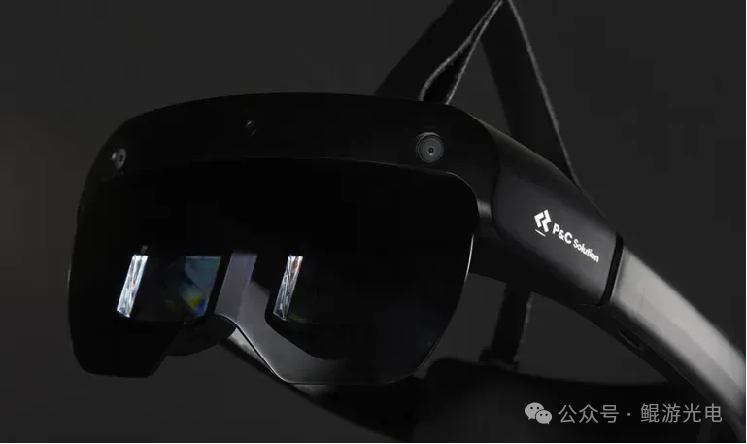
Source:MicroDisplay
5.2 Asus
At this year's CES, Asus launched a large number of display products, including a "wearable display" called AirVision M1. According to the introduction, AirVision M1 is essentially a pair of glasses with a wearable display. It has no built - in processor or battery but is connected to a mobile phone or computer via USB - C and projects the content onto the user's field of view. This pair of glasses uses a 1080p - resolution Micro OLED display with a 57° vertical perspective field of view, a peak brightness of 1100 nits, and a 95% DCI - P3 wide color gamut. The lenses of AirVision M1 have a transmittance of 60%, and the glasses themselves support 3DoF, allowing users to "fix" the virtual screen in a specific position.
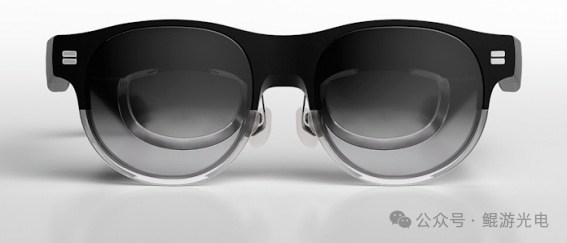
Source:Sina VR
5.3 Rayneo
At CES 2024, Leiniao launched the new - generation binocular full - color MicroLED optical waveguide AR glasses, Leiniao X2 Lite. Equipped with the Qualcomm Snapdragon AR1 platform and a large - model voice assistant, Rayneo AI, it brings users an unprecedented "AI + AR" experience. The Leiniao X2 Lite weighs approximately 60g and adopts the binocular full - color MicroLED + diffractive optical waveguide solution. Its peak eye - entry brightness is as high as 1500 nits, and it supports scenario applications such as real - time translation, intelligent AI assistant, 3D navigation, and first - person - view image creation. The product will be officially launched in the third quarter of 2024.
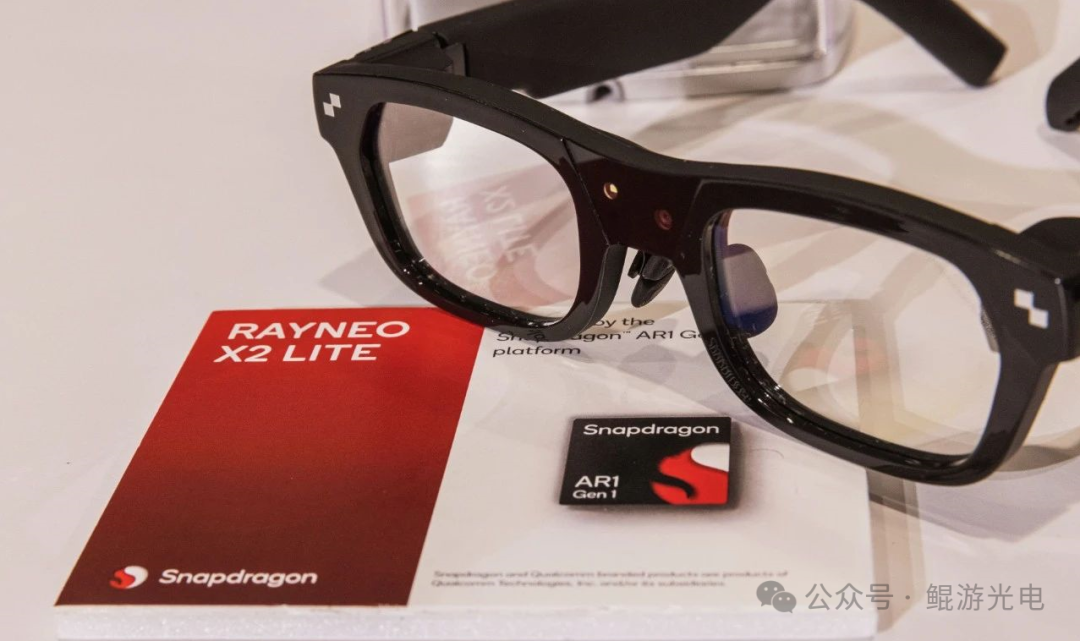
Source:VR gyroscope
5.4 TCL
TCL recently launched an AR glasses model named "Nxtwear S Plus" overseas. It is the successor to the previous "Nxtwear S" glasses and is priced at $399 (about 2877 yuan). This AR glasses is actually a head - mounted transparent display that can be connected to compatible devices such as mobile phones and game consoles via USB - C. In terms of parameters, this AR glasses is equipped with a Sony 1080P Micro - OLED screen, covering 108% of the color gamut. Its brightness has been increased to 600 nits compared to the previous generation, the refresh rate has been increased to 120Hz, and it weighs 87 grams. It can display content with a resolution of 1920 x 1080 on a 215 - inch screen 6 meters away from the user.
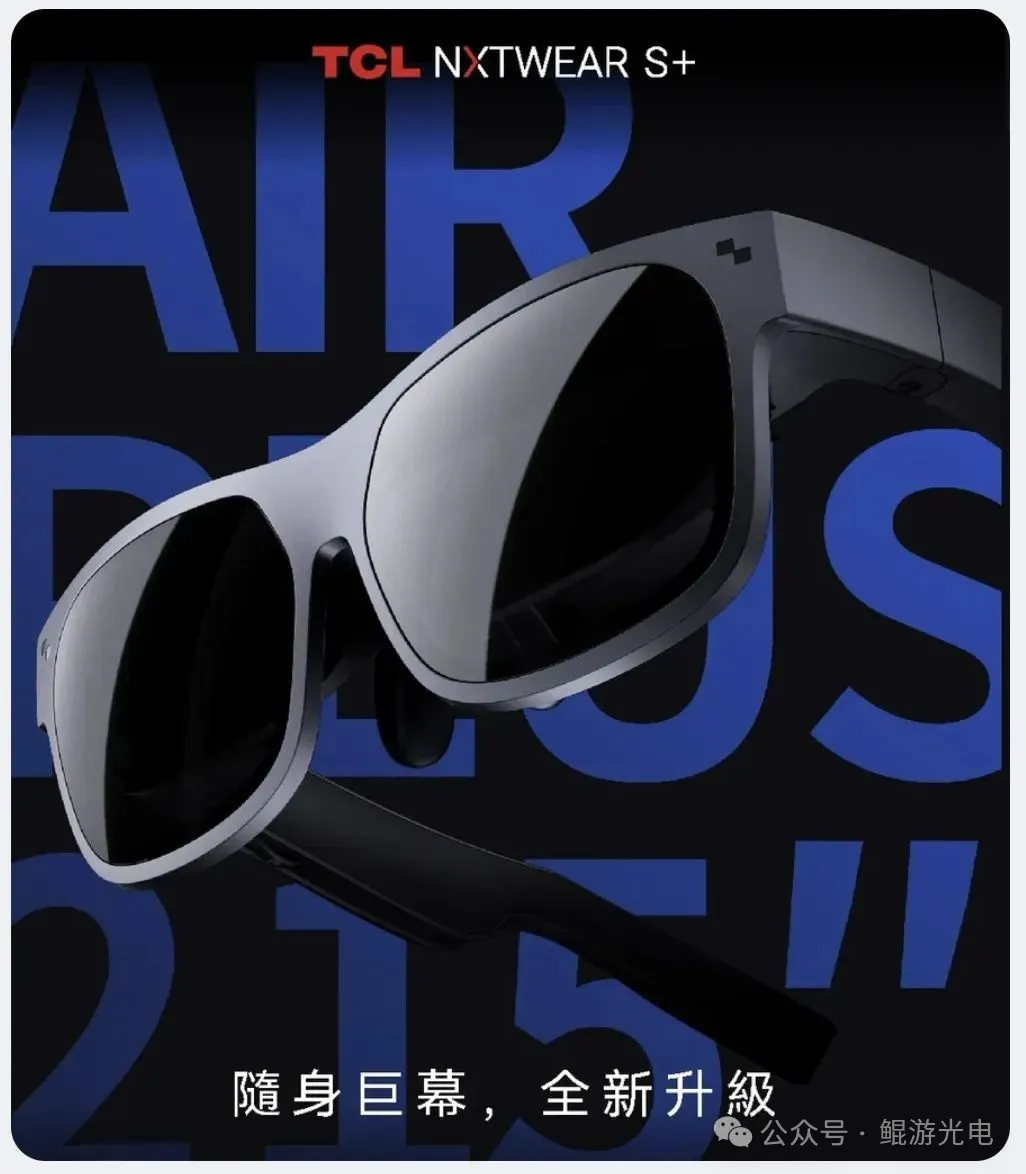
Source: TCL
5.5 OPPO
At the highly anticipated MWC 2024, OPPO launched its new - generation Air Glass 3 smart glasses, which are currently in the prototype stage. This pair of glasses continues to use resin diffractive optical waveguide lenses with a refractive index of 1.70. The overall frame is made of magnesium - lithium alloy and weighs only 50 grams. OPPO Air Glass 3 also has a built - in Breeno assistant, bringing a more intelligent experience with the help of AndesGPT. The lenses are equipped with two color displays, which are more colorful than the previous generation, and the peak brightness exceeds 1000 nits. It is learned from the foreign media Gsmarena that OPPO will also apply the AIGC elimination function to models such as the Reno11 and Find N3.
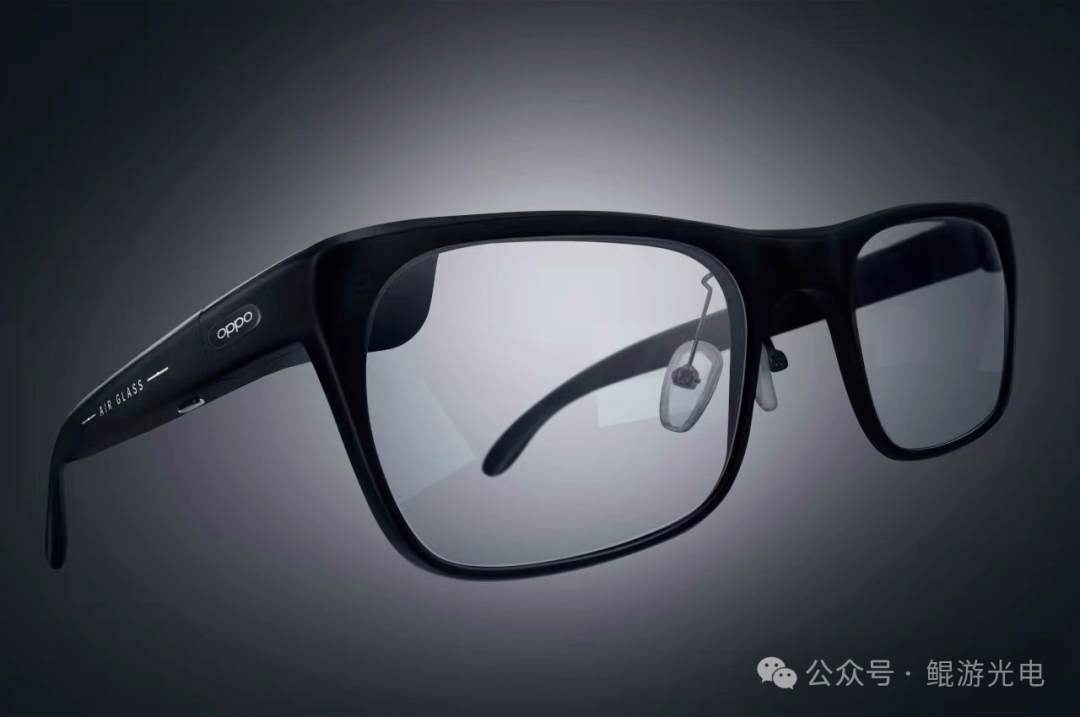
Source:IT Family
6. Industry R & D Dynamics
6.1 VividQ Computer - Generated Holograms
VividQ, a 3D depth technology startup, shared real holographic images projected through high - performance 4K display hardware. The ability to provide these "retinal - resolution" computer - generated holograms means that the next - generation VR headsets will be able to offer users an unparalleled sense of immersion and realism.
VividQ stated that computer - generated holographic technology improves the VR and MR user experience in three main ways: First, holograms can be adjusted to compensate for users' vision, enabling built - in prescription correction without the need to wear glasses, thus reducing the size and weight of the device. Second, consumers can dynamically switch the focus between digital objects at different distances, reducing eye fatigue and allowing for longer gaming sessions. Third, consumers can bring objects close and focus on them without being affected by the visual vergence - accommodation conflict (VAC), which may cause symptoms such as headaches, eye fatigue, or nausea.
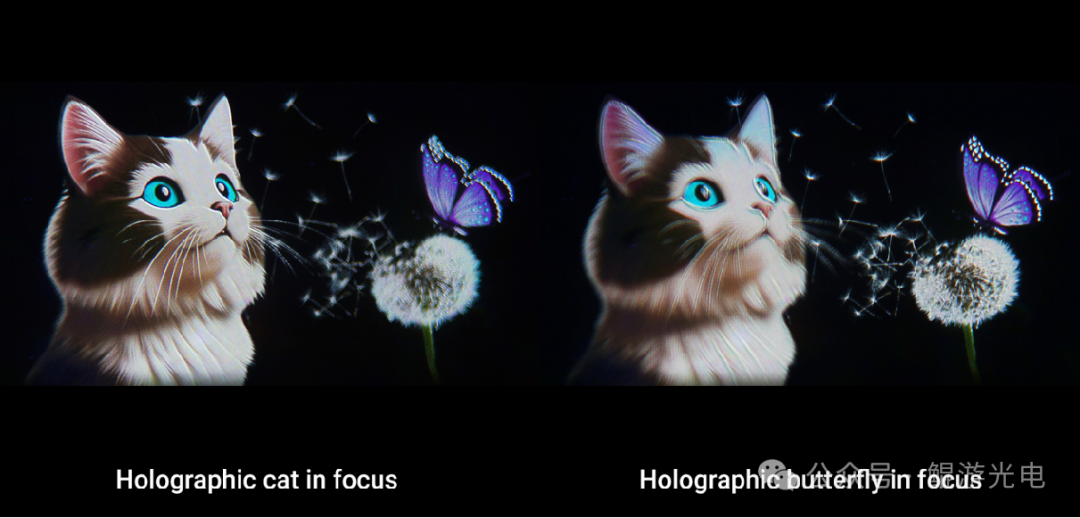
6.2 Avegant LCoS Smart Glasses
Avegant, an AR optical technology company, is jointly developing ultra - light AI starry - sky glasses with Qualcomm and Applied Materials. Raontech also launched a low - power LCoS module at the beginning of this year. LCoS has high brightness and is increasingly being used in AR devices, although it lags behind OLED and MicroLED in terms of contrast, and these two technologies are currently used in AR and virtual reality devices. Raontech said that Avegant's new technology can increase the LCoS contrast by 10 times and reduce power consumption by 90%.

Source: MicroDisplay
6.3 Wistron and Dispelix's Joint AR Glasses Reference Design
Wistron, one of the world's largest electronics manufacturing companies, and Dispelix, a leading XR optical waveguide display developer, unveiled their new AR glasses reference design at CES 2024. The binocular full - color display module of this reference design consists of Dispelix's single - layer diffractive waveguide and a micro LCoS projector, with a 30 - degree FOV (diagonal). The glasses also integrate a set of other key components, including an 8 - megapixel camera, microphone, and speaker, and have a lightweight and compact design.
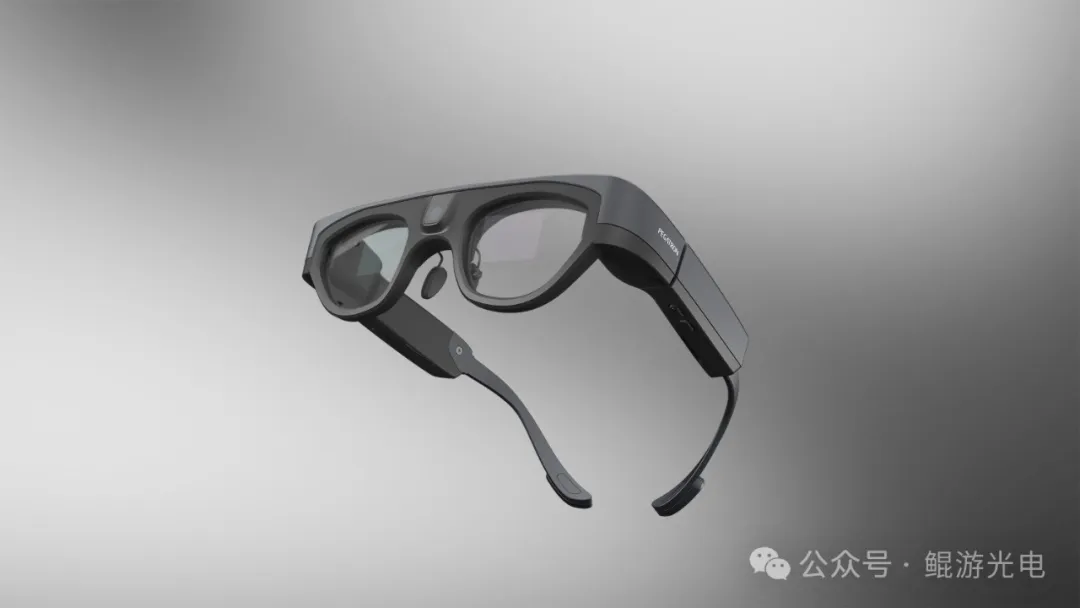
Source: Dispelix
6.4 Avegant's LCoS Adaptive LED Lighting Architecture Spotlight
Avegant recently released an adaptive LED lighting architecture for LCoS called Spotlight. The team pointed out that by dynamically illuminating areas of the LCoS microdisplay, Avegant achieved advantages in the average pixel level (APL), saving up to 90% of the lighting power while increasing the contrast by more than 10 times. It is reported that the Spotlight display technology can be integrated with Avegant's existing products. It retains the advantages of a small and mature light engine while providing efficient, full - color, high - resolution, and polarized output. The team will provide a demonstration of the Spotlight display technology at SPIE Photonics West 2024.
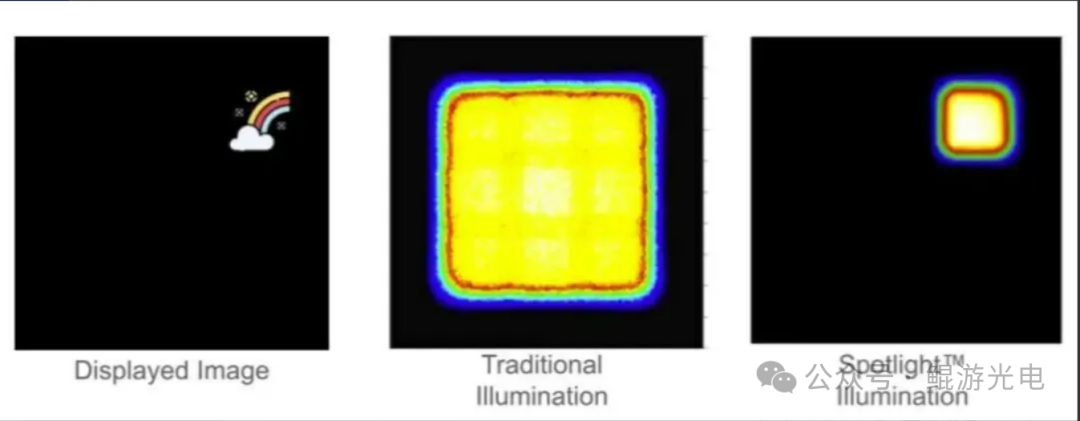
Source: Nweon
6.5 Vuzix Z100 Smart Glasses
Vuzix, a manufacturer of AR smart glasses, recently launched the new Z100 smart glasses (developer version). It is reported that this AR glasses, priced at $799.99, is designed for frontline workers and serves as a lightweight and durable safety device.
The Vuzix Z100 is based on the Ultralite platform but has been reinforced for industrial environments. This pair of glasses weighs slightly over one ounce (36 grams) and is one of the lightest smart glasses on the market. The device has a 30 - degree field of view and can offer up to 48 hours of battery life on a single charge. In addition, users can interact with the system through a touchpad located in a position similar to that of the solar system. Moreover, the Vuzix Z100 smart glasses use transparent waveguides and provide the Vuzix Connect demonstration application and sample code, enabling pairing with iOS or Android devices.
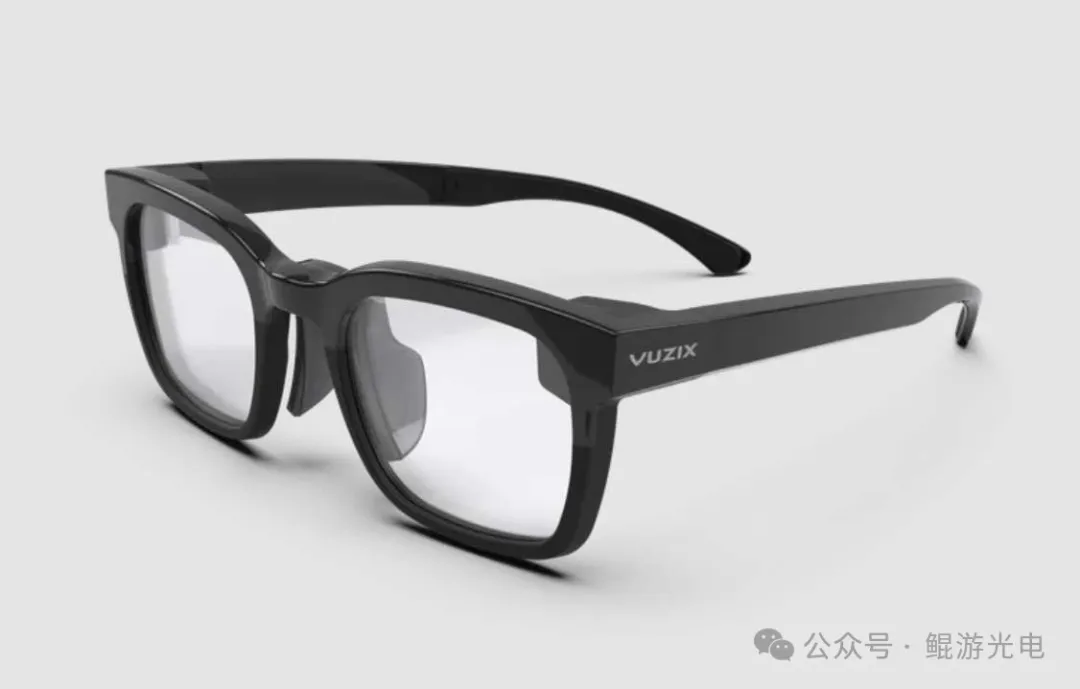
Source:MicroDisplay
Mojo Vision
Mojo Vision, a developer of high - performance Micro LED microdisplays, announced that the company has successfully integrated red, green, and blue (RGB) sub - pixels into a single panel using its proprietary high - performance quantum dot (QD) technology and integration process. This proof - of - concept solution integrates quantum - dot red and green sub - pixels with a diameter of 1.3μm and native blue sub - pixels with a diameter of 1.3μm. The solution demonstrates the feasibility of the company's development of monolithic RGB Micro LED displays. This marks a significant advancement in Micro LED technology and its application in AR devices, indicating that AR devices can achieve high - performance displays in different outdoor environments

Source:MicroDisplay


